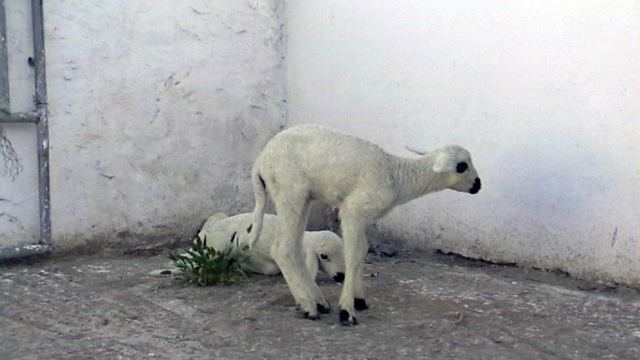 | ||
Nutritional muscular dystrophy (also called nutritional myopathy or white muscle disease) is a muscle disease of lambs, calves, and foals and adult horses due to deficiency in selenium and/or vitamin E.
Contents
The condition is observed in all breeds and sexes of lambs, from birth to three month of age. Its frequency increases with upgrading of sheep breed for increased muscling, especially in areas with selenium deficiency in soils.
In dairy breeds, the disease occurs in calves from some days after birth until four months of age. But, in rustic breeds or beef cattle, heifers and young steers up to 12 months can also be affected.
Clinical symptoms
The most usual form involves skeletal muscles, especially in the back. The animal is weak when it stands up, and has an awkward gait. Animals tend not stay up for more than a few minutes. When in recumbency, the animals are normal, and have a good appetite.
Treatment
Affected lambs and calves generally recover after injection of veterinary preparations of selenium and vitamin E.
In horses
In equids, nutritional muscular dystrophy is most commonly seen in growing foals from birth up to 1 year of age. It is more common in neonatal foals born to dams that are selenium-deficient. Two forms exist: a peracute form, and a subacute form. The peracute form is characterized by recumbency, tachypnea, dyspnea, myalgia, cardiac arrhythmias, and rapid death. The subacute form produces weakness, fasciculations, cramping, and stiffness of muscles which can lead to recumbency, as well as a stilted gait, dysphagia, ptyalism, and a weak suckle. It may be treated with selenium supplementation, but still has a 30–45% mortality rate. Other sequela commonly seen include aspiration pneumonia, failure of passive transfer, and stunting of growth.
Clinical laboratory changes include evidence of rhabdomyolysis (elevated CK and AST, myoglobinuria) and low blood selenium levels. On necropsy, muscles are pale with areas of necrosis and edema evidenced as white streaks.
